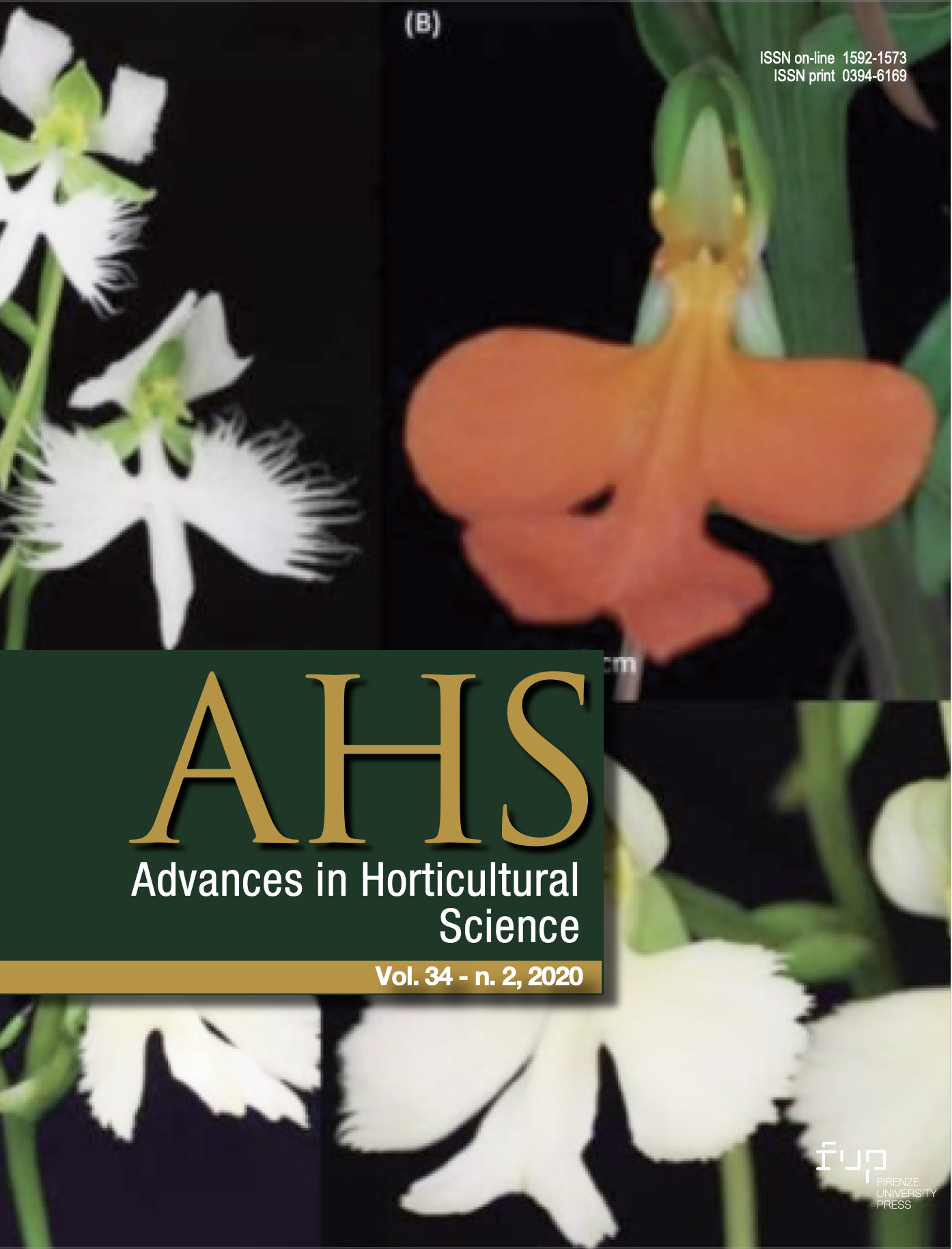Comparative postharvest responses of carnation and chrysanthemum to synthesized silver nanoparticles (AgNPs)
Published 2020-04-01
Keywords
- cut flowers,
- ethylene,
- microbial growth,
- silver nanoparticles,
- vase life
- water relations ...More
How to Cite
Abstract
Carnation (Dianthus caryophyllus L.) and chrysanthemum [Dendranthema grandiflorum (Ramat.) Kitam.] cut flowers are among the most important commodities that dominate flower markets throughout the world. Two major problems in the transportation and marketing of these flowers are their relatively short vase life and the rapid decline of their aesthetic value. In this respect, the current study investigates the effects of silver nanoparticles (AgNPs) on ethylene-sensitive (carnation) and ethylene-insensitive (chrysanthemum) cut flowers. Specifically, this research examines their morpho-physicochemical characteristics, antioxidant enzyme activities and vase life. Here, the AgNPs were synthesized by chemical methods and then applied on both flowers by a pulsing method. The treatments involved two concentrations of AgNPs (0.04 and 0.08gL-1) along with the control (deionized water), and the duration of exposure lasted for 24 h. Then, the flower stems were placed in an aqueous sucrose solution (4%) until the end of the experiment. All traits, except the vase life, were evaluated after 0, 3, 6 and 9 d following the treatments during the vase period. During this time, the control groups of both flowers showed considerable amounts of decrease in the relative fresh weight (RFW), vase solution uptake (VSU), flower diameter, membrane stability index (MSI) and total soluble carbohydrate (TSC). Meanwhile, there were increases in hydrogen peroxide content (H2O2) and peroxidase (POD) activity. The bacterial population of the stem end and total soluble protein (TSP) increased in carnation petals, but decreased in chrysanthemum petals. The activity of superoxide dismutase (SOD) dropped in carnation petals, whereas it rose in chrysanthemum petals. Using AgNPs at concentrations of 0.08 and 0.04gL-1 can optimally extend the vase life of carnation and chrysanthemum, respectively.






